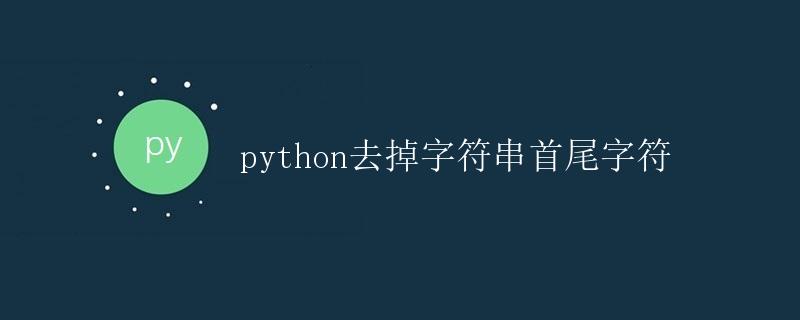python去掉字符串首尾字符

在Python中,有多种方法可以去掉字符串的首尾字符。这在处理字符串时非常有用,特别是在清理用户输入时。本文将介绍几种常用的方法,以及它们的应用场景和示例代码。
方法一:使用strip()方法
strip()方法可以去掉字符串的首尾指定字符(默认为空格)。
# 示例代码
s = " hello world "
result = s.strip()
print(result)
# 运行结果
# hello world
在上面的示例中,我们调用strip()方法去掉了字符串s首尾的空格。你也可以指定要去掉的字符,如s.strip('l')将去掉首尾的字母”l”。
方法二:使用lstrip()和rstrip()方法
lstrip()方法可以去掉字符串左侧的指定字符,rstrip()方法可以去掉字符串右侧的指定字符。
# 示例代码
s = " hello world "
result_left = s.lstrip()
result_right = s.rstrip()
print(result_left)
print(result_right)
# 运行结果
# hello world
# hello world
在上面的示例中,我们分别用lstrip()和rstrip()方法去掉了字符串s左侧和右侧的空格。
方法三:使用正则表达式
如果要去掉字符串中除了特定字符以外的所有字符,可以使用正则表达式。
import re
# 示例代码
s = "Hello, World!"
result = re.sub('[^A-Za-z0-9]+', '', s)
print(result)
# 运行结果
# HelloWorld
在上面的示例中,我们用re.sub()函数和正则表达式[^A-Za-z0-9]+去掉了字符串s中的所有非字母和非数字字符。
方法四:使用切片操作
切片操作也可以用来去掉字符串的首尾字符。
# 示例代码
s = " hello world "
result = s[2:-2]
print(result)
# 运行结果
# hello worl
在上面的示例中,我们使用切片操作[2:-2]去掉了字符串s的首尾两个空格。
总结
本文介绍了四种常用的方法来去掉字符串的首尾字符。根据具体情况选择合适的方法,可以提高代码的清晰度和效率。
 极客教程
极客教程